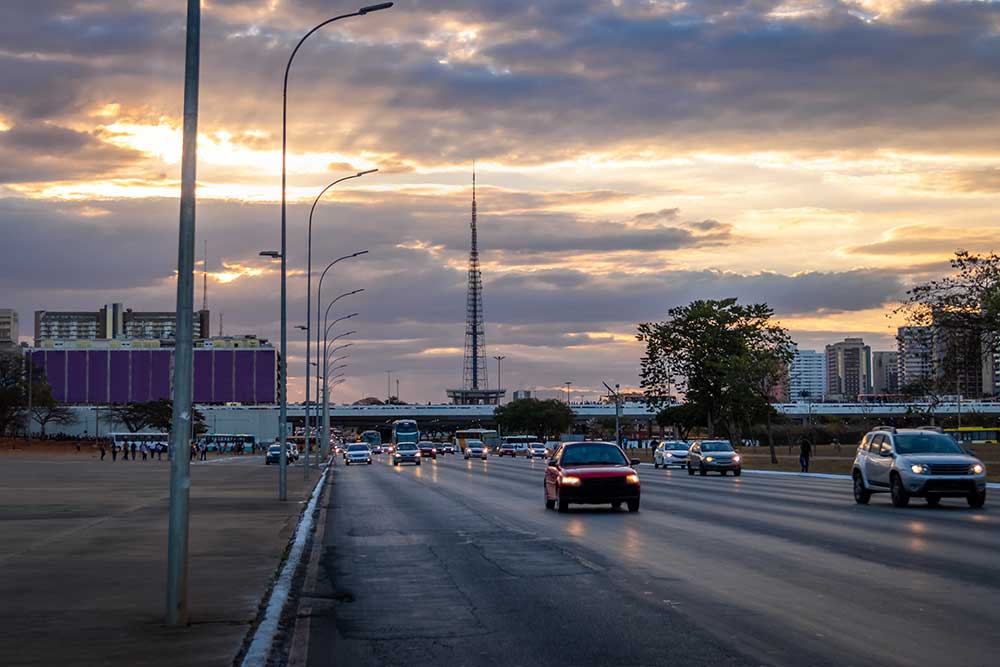If your fleet operates beyond the major cities, you know the reality is different out there.
The safety challenges your drivers face in regional and remote Australia aren’t just variations of city driving … they’re completely different problems that need completely different solutions.
Yet many fleet safety programs are designed with urban driving in mind, leaving regional drivers to figure out these challenges on their own.
Let’s talk about the unique risks your regional drivers face and what you can do to keep them safe when they’re hundreds of kilometres from help.
The Isolation Factor
The most obvious difference about regional driving is also the most dangerous: when something goes wrong, help is a long way away.
Your drivers operating in regional areas deal with risks that city-based drivers rarely consider:
- Mobile phone coverage that drops out for hours at a time
- Breakdown locations where passing traffic might be one vehicle per hour
- Medical emergencies where the nearest hospital is over an hour away
- Weather events that can strand drivers for days
This isolation changes everything about risk management. A minor incident in the city becomes a major emergency in remote areas.
The Wildlife Wild Card
Let’s talk about the elephant in the room … or rather, the kangaroo on the road.
Wildlife strikes are a daily reality for regional drivers, especially during dawn and dusk hours when many animals are most active.
But it’s not just about the immediate crash risk:
- Large animals can cause massive vehicle damage and serious injuries
- Striking an animal in a remote location can leave drivers stranded
- Seasonal breeding patterns change wildlife behaviour and increase strike risks
- Different regions have different wildlife hazards that drivers need to understand
The Fatigue Reality
Regional driving often means long distances, and long distances mean fatigue becomes a critical safety issue.
But managing fatigue in regional areas isn’t as simple as pulling over for a nap:
The Schedule Squeeze
Regional drivers often face impossible choices:
- Arrive on time and push through dangerous fatigue levels
- Take proper rest breaks and disappoint clients who expect punctuality
- Drive through the night to make morning appointments
- Start early to avoid afternoon heat but risk dawn wildlife activity
These scheduling pressures are magnified by the distances involved and the limited accommodation options in many regional areas.
Environmental Challenges
Regional driving conditions create fatigue faster:
- Constant vigilance for wildlife and road hazards
- Poor road surfaces that require continuous vehicle control
- Extreme temperatures that drain energy
- Monotonous landscapes that induce highway hypnosis
Your drivers are working harder just to maintain basic safety, which accelerates fatigue onset.
Communication Blackouts
When your drivers are out of mobile range, standard fleet management approaches break down completely.
Consider these scenarios:
- A driver has a minor crash but can’t call for help or report the incident
- Weather conditions deteriorate but drivers can’t receive updates or warnings
- Schedule changes need to be communicated but drivers are unreachable
- A driver experiences a medical emergency with no way to call for assistance
Your communication protocols need to account for these blackout periods and provide alternative plans.
The Weather Extremes
Regional Australia throws weather challenges at drivers that city operations rarely face:
Sudden Storm Systems
Afternoon thunderstorms can turn sealed roads into rivers within minutes. Your drivers need to know:
- How to identify flood-prone sections of their routes
- When to turn around rather than attempt to cross water
- Where to shelter during severe storms
- How to communicate their situation when mobile coverage is poor
Extreme Heat Challenges
Summer temperatures in regional areas can get hot, creating risks that go beyond driver comfort:
- Vehicle overheating on long climbs
- Tyre failure risks on hot roads
- Dehydration and heat stress for drivers
- Cargo damage from extreme temperatures
Seasonal Road Conditions
Many regional routes change dramatically with the seasons:
- Wet season flooding that makes roads impassable
- Dust storms that reduce visibility to zero
- Frost and black ice in elevated areas
- Fire risks that can close roads with little warning
Your drivers need seasonal awareness that goes well beyond checking the daily weather forecast.
Building Regional-Ready Safety Systems
Creating effective safety programs for regional operations requires thinking differently about risk management.
Route Intelligence
Your drivers need detailed knowledge about the areas they’re travelling through:
- Locations of fuel stations, rest areas, and accommodation
- Mobile phone coverage maps and dead zones
- Seasonal hazards and road condition updates
- Alternative routes for different weather conditions
- Emergency services availability in different regions
This information needs to be current, accessible, and regularly updated.
Emergency Preparedness
Regional drivers need comprehensive emergency kits and clear protocols:
Standard emergency equipment should include water, food, first aid supplies, communication devices, and basic repair tools. But your regional drivers also need specific gear for their operating environment.
Emergency protocols need to cover scenarios like vehicle breakdown in remote areas, wildlife strikes, severe weather events, and medical emergencies when help is hours away.
Communication Solutions
Maintaining contact with regional drivers requires backup systems:
- Satellite communication devices for areas without mobile coverage
- Regular check-in schedules that account for communication blackouts
- Emergency contact procedures that don’t rely on mobile phones
- Clear protocols for when drivers miss scheduled check-ins
The Human Element
Regional driving can be mentally and emotionally challenging in ways that affect safety:
Social Isolation
Drivers spending long periods alone on remote roads face psychological challenges:
- Reduced alertness from lack of social interaction
- Mental fatigue from monotonous driving conditions
- Stress from constant vigilance and responsibility
- Difficulty maintaining motivation during long trips
Your safety program needs to address these human factors, not just technical driving skills.
Local Knowledge Gaps
Drivers unfamiliar with regional areas face additional risks:
- Underestimating distances and travel times
- Misunderstanding local traffic patterns and hazards
- Lack of awareness about seasonal challenges
- Poor understanding of local emergency services and facilities
Building local knowledge takes time and experience that new drivers don’t have.
Practical Solutions That Work
Effective regional fleet safety isn’t about adding more rules – it’s about providing practical support for the unique challenges drivers face.
Pre-Trip Planning
Regional trips require more thorough preparation:
- Detailed route planning that considers all potential hazards
- Weather monitoring and contingency planning
- Fuel and rest stop scheduling based on actual distances
- Emergency contact information for the entire route
Technology That Helps
The right technology can significantly improve regional driver safety:
- GPS systems with offline maps for areas without mobile coverage
- Weather monitoring apps that work with satellite communication
- Vehicle tracking that continues working in remote areas
- Emergency communication devices that function anywhere
Training That Matches Reality
Regional drivers need specific skills training:
- Wildlife hazard recognition and avoidance
- Extreme weather driving techniques
- Emergency response procedures for remote locations
- Vehicle maintenance skills for basic roadside repairs
Creating a Support Network
Your regional drivers need to know they’re not alone out there.
Regular Communication
Maintain contact even when drivers are in remote areas:
- Scheduled check-ins that work around communication limitations
- Clear procedures for reporting location and status
- Emergency contact protocols that provide backup options
- Regular route updates and hazard information
Peer Support
Experienced regional drivers are invaluable resources:
- Mentoring programs that pair new drivers with experienced regional operators
- Regular debriefing sessions where drivers can share experiences and solutions
- Communication channels that allow drivers to share real-time hazard information
- Recognition programs that acknowledge the unique challenges of regional driving
Driver Safety Australia understands the specific challenges of regional fleet operations across Australia.
We can help you develop safety programs that address the real risks your drivers face when they’re operating outside the major cities.
Contact us today to discuss practical approaches to regional fleet safety that work in the real world.





